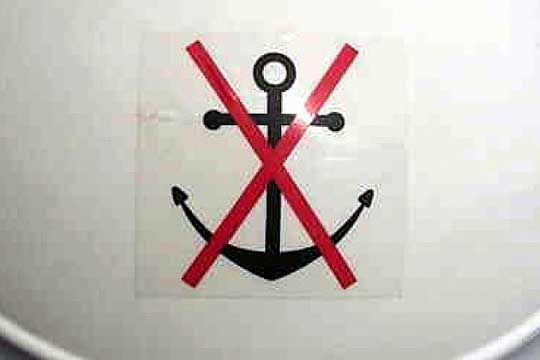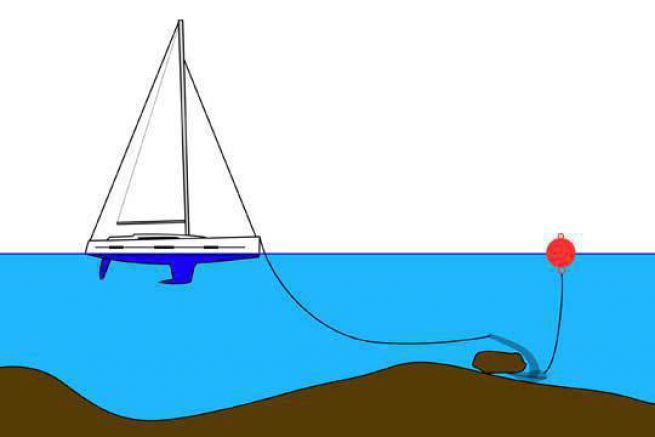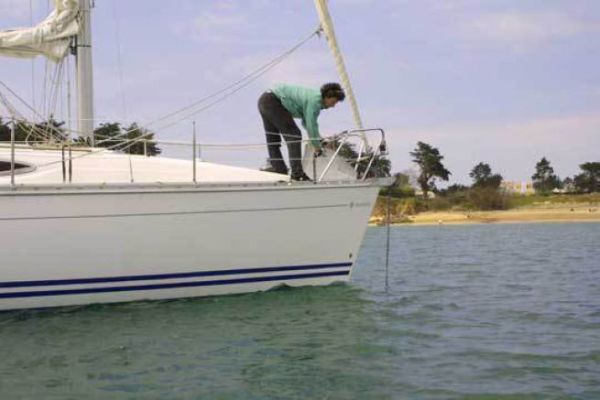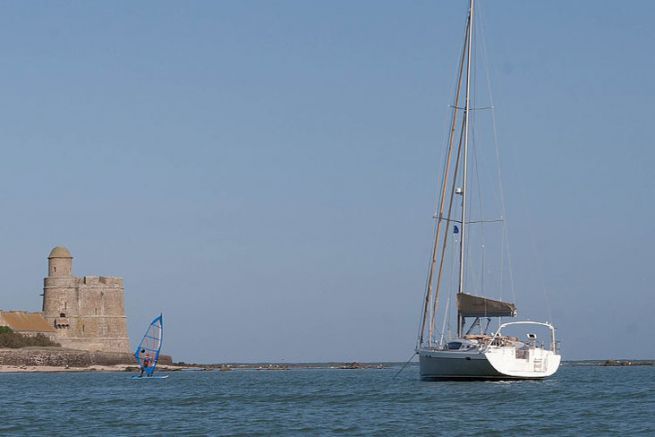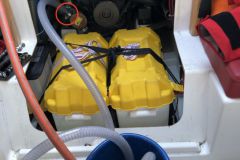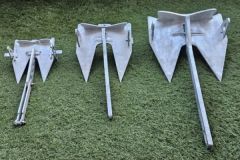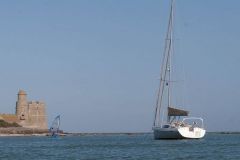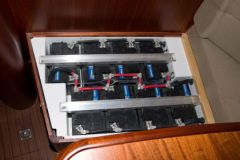To anchor, you drop your anchor from the bottom. This is the very principle of anchoring... But what guarantee do you have of recovering it when you leave? Depending on the nature of the bottom, the anchor may very well be stuck in a rock or worse, under a cable, impossible to retrieve..
To avoid getting into this bad position, you need to install a mooring line. A mooring line is a rope attached to the anchor's diamond and held at the surface by a buoy. If the anchor is stuck on the bottom, it is brought up using the rope, which has the function of tilting the anchor and freeing it. In addition, the anchor, located vertically to the anchor, allows to signal it to other boats. It is very useful to know the length of chain anchored by the neighbor and to visualize its avoidance.
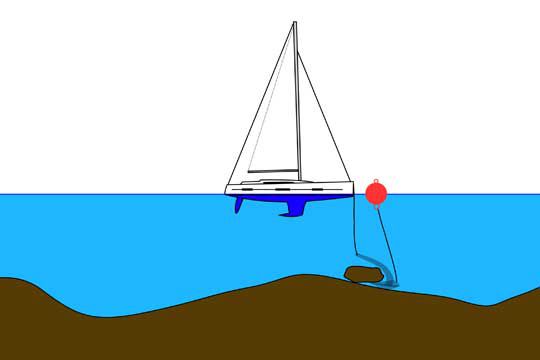
The anchor is stuck under a rock...
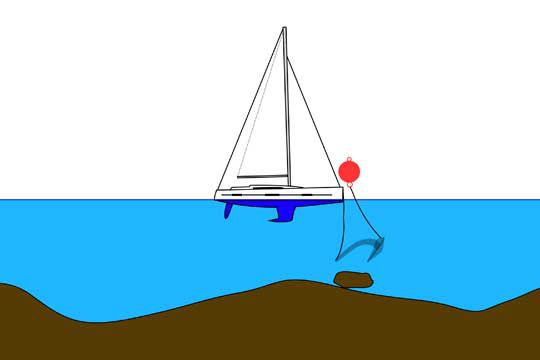
Just pull on the pin to release it.
So the gold is great! Why deprive yourself of it?
Anchoring with a mooring line complicates the anchor maneuver a little more, since the mooring line and its buoy must be let go at the same time as the anchor. The biggest difficulty is to manage the water depth. Indeed, a mooring line must be vertical to the anchor and therefore have a rope calculated according to the depth.
Too short, the buoy will be underwater and will tend to make the anchor "float" by hindering its proper attachment. Too long and the line may get caught in the propellers of passing boats. Ideally, the anchor should be exactly the same depth.
In waters with very low tides (the Mediterranean, for example), you can set the length of the mooring line before anchoring. But if you're in tide-prone waters, you must take the tidal range into account and calculate the length of the mooring line based on the high tide... Not easy-easy!
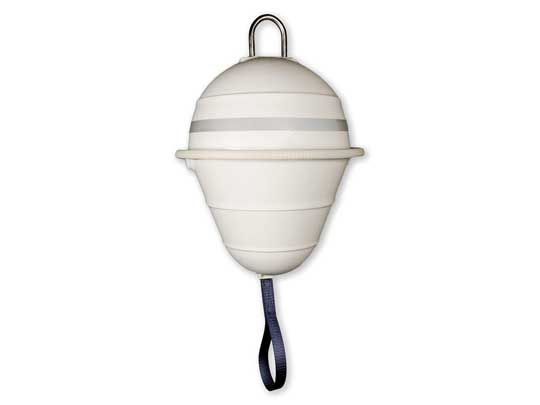
To solve this delicate problem, you can also use the Swi-Tec buoy (available on swi-tec.fr). This buoy has a reel inside. This way, the buoy always stays above the anchor and follows the variations in water height. The quality of construction with a stainless steel mechanism ensures its good functioning over time. This model has been on the market for 20 years and is flawless.
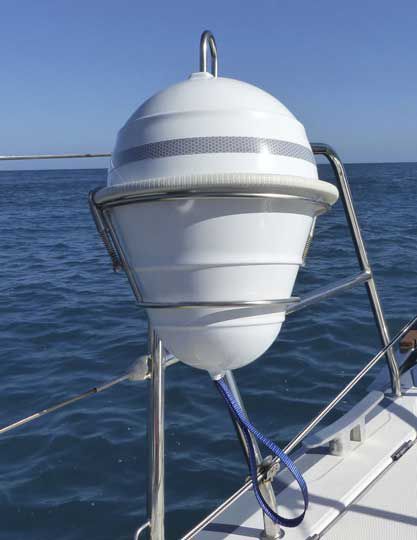
The buoy is equipped with a luminous reflector for easy viewing with a flashlight, but also with a small pictogram indicating "no mooring" (a crossed out anchor). Indeed, it is important not to let an indelicate yachtsman come and moor on a mooring buoy. This would have the consequence of lifting the anchor by its diamond and making everyone slip..
